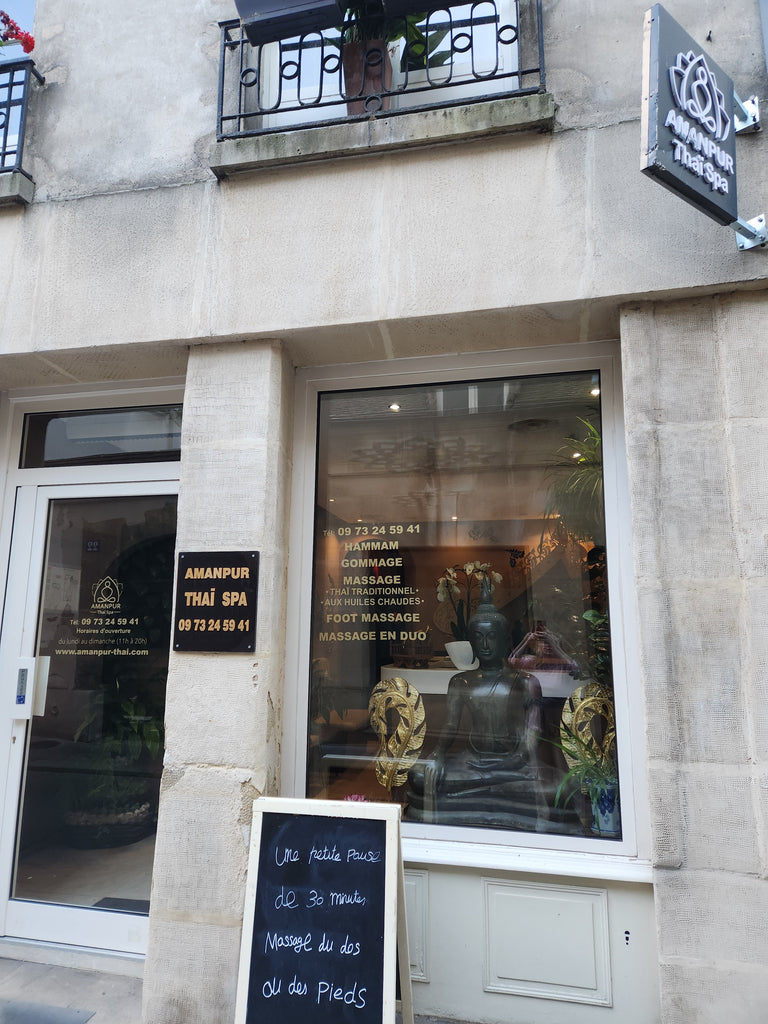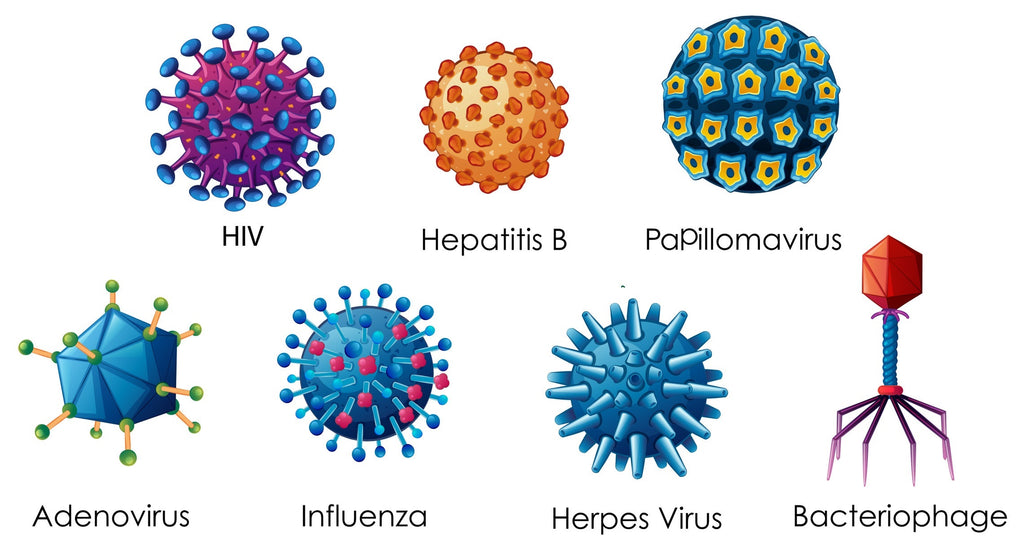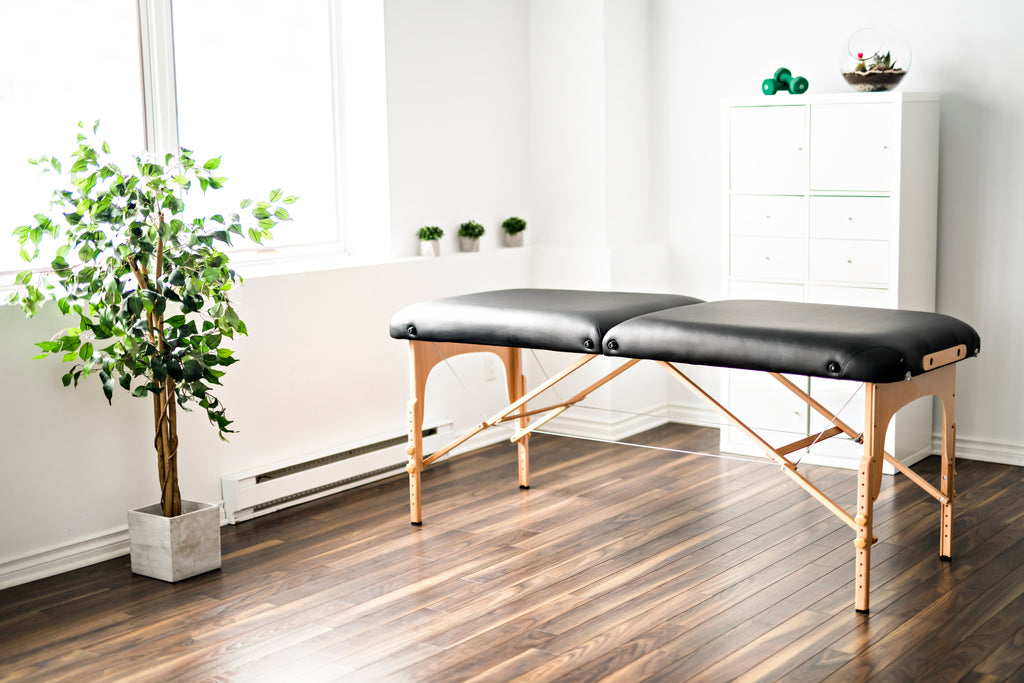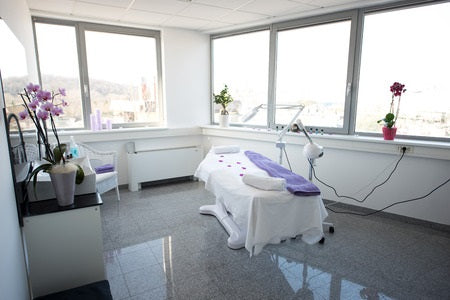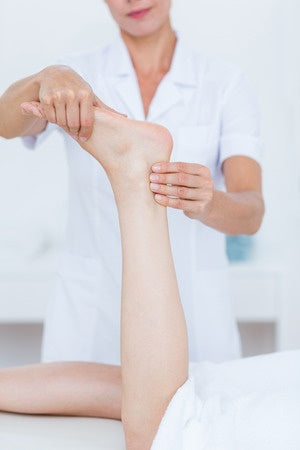We’ve been wanting to introduce Thai massage education at the school for a while now; however, it’s usually quite inexpensive to fly to Thailand to study this modality over there, at one of several Thai massage schools that welcomes Americans to their studies.
Thai massage is usually performed on a floor mat, fully clothed, with a balance of passive stretching exercises and compressions where some clients might describe it as being twisted into a pretzel in the best imaginable way possible. Thai massage gently and passive moves human joints through normal ranges of motion to increase function, relieve stress and other health benefits.
In this Thai Spa that I got to visit as a walk-in client on the streets of Paris, I found a well decorated and clean establishment with welcoming staff. We looked through their menu of services and while I had originally wanted a Thai massage, I thought it would be a better learning experience to see what or how a Thai practitioner would provide an oil massage, so I booked the oil massage instead. Oil massage is the more typical practice of what we teach at CE Institute LLC, so I have been consuming as many different massage appointments as possible to see if I can learn or experience anything different to continually share in updated education at our training facility.
After I had established which type of appointment I would experience at this Thai Spa, the service provider immediately had me remove my footwear in place of theirs. This is a Thailandese traditional and cultural norm that promotes sanitation and conveys mutual respect and care. I asked to use the bathroom first which every practitioner should offer prior to massage, so that the appointment is not disrupted with a need to use it!

For this Thai oil massage experience, the massage therapist brought me into a small treatment room and asked me where I wanted the massage focused. I told her my legs were sorest of all from walking the city of Paris, and then she told me to disrobe and to lay pronated on the massage table.

The table was covered with a narrow sheet of paper over what looked like a cotton printed sheet from Thailand which was beautiful. Towels were folded on the corner of the table to cover myself with and the therapist split a hole in the paper where my face was to be placed to breathe. I opted to put my sweater over the hole and leave my head turned to the side for sanitation reasons. The room was dimly lit and beautifully decorated with wallpaper; however the lighting in the ceiling was neon in color which gave off the wrong vibe for me. I would have enjoyed lightning to be in a soft warm yellowish tone which would have felt more comforting than being in a neon lit room. I believe soft yellowish lighting would significantly improve the spa’s existing beautiful assets.

When the therapist re-entered the room, she started her service with hot towels to my feet, then strong compressions on the soles of my feet. She worked superiorly moving into compressions with her palms over my heels and upwards through my calves and hamstrings. At some point during the posterior lower extremity compressions, she jumped onto the table between my legs and continued her compressions through my hips and low back without missing a beat. Most clients would probably not know the practitioner was now on top of the table instead of beside it; however, it was clear the direction and pressure she was provided could only be achieved from being directly over the top of me. A while ago, some massage organizations required that a massage therapist maintain one foot on the ground at all times during a massage appointment. I’m not sure if that requirement still exists, but it would be hard to follow in Thai practice where therapists usually hop onto the table for better leverage.
The massage began with warm oil with a bottle she kept in an oil warmed in the corner of the room. For sanitation reasons, we would recommend to elevate this oil warmer onto a higher shelf area, and to wash both the oil warmer itself and the oil bottle between clients to avoid cross contamination.

The massage itself was slightly disappointing, as the therapist repeated the same strokes over and over again. I was surprised when the initial oil application started from the hips and was applied towards my feet inferiorly which is against venous return and ill-advised. Once the oil was applied, the massage therapist changed direction and started strokes superiorly from the feet to the hips, to promote venous return. Unfortunately the same stroke was applied over and over again, repeatedly, in a manner that simply felt boring and uninteresting. It’s almost like she was going through the motions of providing the massage without any clear intention or care for its purpose. It’s been a long time since I’ve felt such a detached massage as this one. The speed and contact of the massage were decent, but it felt like the massage therapist was not mentally present, in the moment, and that feeling was overly emphasized when she left our treatment room in the middle of the massage without explanation, to speak to other incoming customers and staff at least three times within a 30-minute period.
We did have a language barrier where I speak enough French to get by; however, no attempt to discuss contraindications or goals were made other than asking where I wanted the oil massage applied on my body. In the end, I regretted not scheduling a Thai massage in this Thai spa, wondering if that would have been a better service than what I had received.
When I dismounted the massage table, my legs did feel better so I was glad to experience some therapeutic effect from the appointment because when I was on the table, it felt like there would be little to none. I did notice that the paper sheet that had been used to cover the table was no longer intact, which concerns me from a sanitation standpoint, especially if they are not changing that beautiful cotton sheet directly underneath it.

When I re-entered the reception area to pay, I encountered another client who was putting on the spa’s footwear so I asked her what she had scheduled. She responded she did not know but was a regular client who lived on the same street. I was pleasantly surprised to find this regular client going to this establishment for her own benefit despite not knowing what she was receiving. I asked her if she was disrobing for oil massage or being stretched through her clothes, and she described a Thai massage that was finished with some brief oil massage application which she said she thoroughly enjoyed and has come back many times to receive.
In the end, what I received at this Thai spa would not be the same experience for all Thai establishments. The phrase “when in Rome” kept coming to mind during my massage here, which said to me that while I’m in a Thai spa, I might have benefited most from a Thai service such as Thai massage.

